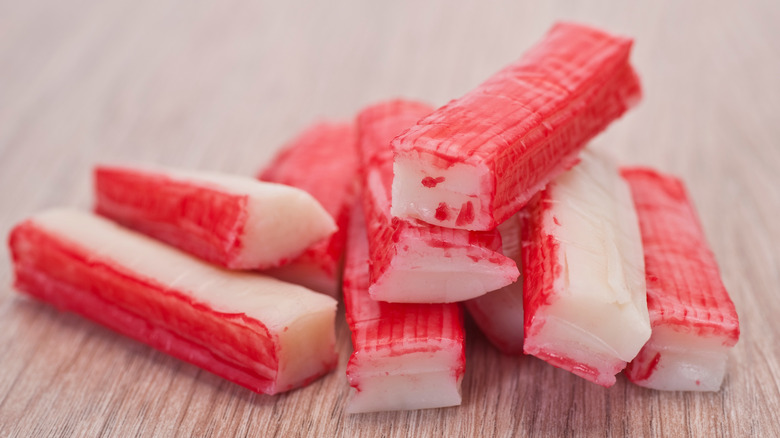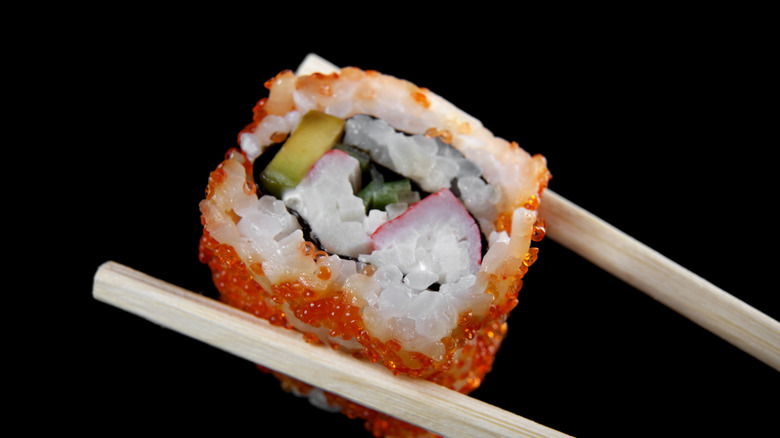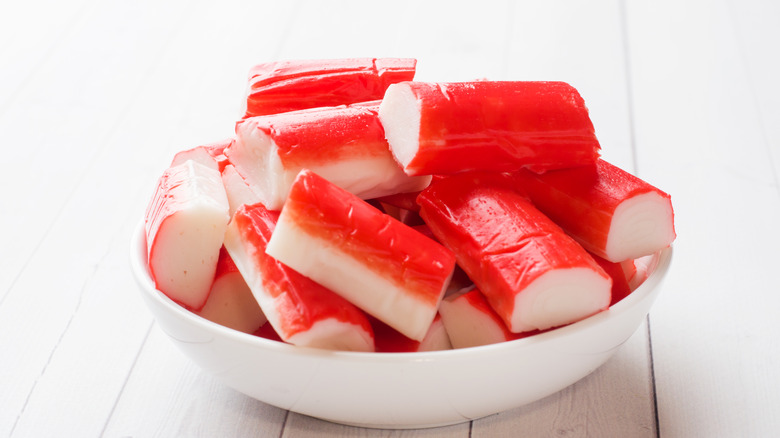The Biggest Imitation Crab Myth You Need To Stop Believing
Sushi is one of the most instantly recognizable foods, both for its aesthetic and for its delicious tastes and textures. While the hallmarks of sushi are typically considered to be raw fish like tuna or salmon, plenty of other ingredients form the cuisine's backbone — one of them is imitation crab, a key ingredient in California rolls.
Imitation crab — which also makes frequent appearances in things like mixed seafood salads – is a weird ingredient for a variety of reasons. It only tastes like crab if you squint, and it certainly doesn't have the same texture as the classic crustacean. This discrepancy has led many people to question whether imitation crab is even seafood in the first place. It's easy to see why people wonder; most "imitation" foods are made from plant-based substitutes, so it's fair to wonder if imitation crab falls into the same category.
Let's set the record straight: Imitation crab is absolutely seafood — it just isn't crab. Instead, it's made from something called surimi, typically made from ground-up cheap fish stabilized for a longer shelf life.
Surimi has been around for a really long time
Surimi sounds like some sort of modern lab-based concoction, but it actually has a surprisingly long history. It dates back to the 12th century when Japanese chefs preserved leftover fish by grinding and salting it. But, it wasn't until the 1960s that chemists began adding sugar to the process. That, along with advances in refrigeration technology, could supercharge its shelf life.
This was important because while crab is delicious, it isn't cheap. Do you know what is cheap, though? Pollock, a North Atlantic white fish, which is the most common constituent ingredient in surimi (though certainly not the only one, as other white fish like cod, haddock, and hake aren't rare). The international rise of sushi meant the creation of a vastly cheaper alternative that tasted somewhat like crab would be a massive boon to the nascent industry (not to mention the seafood industry at large).
Imitation crab is made from sustainable seafood
But because of its odd texture and structure (it's basically the fish equivalent of string cheese) — not to mention its meteoric rise in America from the 1990s to now — people have developed a lot of misconceptions about imitation crab. Whether it's seafood is the biggest, but it's far from the only imitation crab myth. It contains significantly less protein, vitamins and minerals than real crab (although it does win out on sodium content).
But these misconceptions cut both ways. The other advantage of imitation crab — one people often don't realize — is that it's far more sustainable than most forms of modern commercial seafood. As crab populations crater due to climate change and other human-created follies, imitation crab becomes ever more attractive as an alternative since pollock, in particular, is one of the more sustainable fish in the world. As such, imitation crab isn't going anywhere — and even if it doesn't taste enough like crab for your tastes, you can feel secure in the knowledge it's still at least a fish of some kind.


